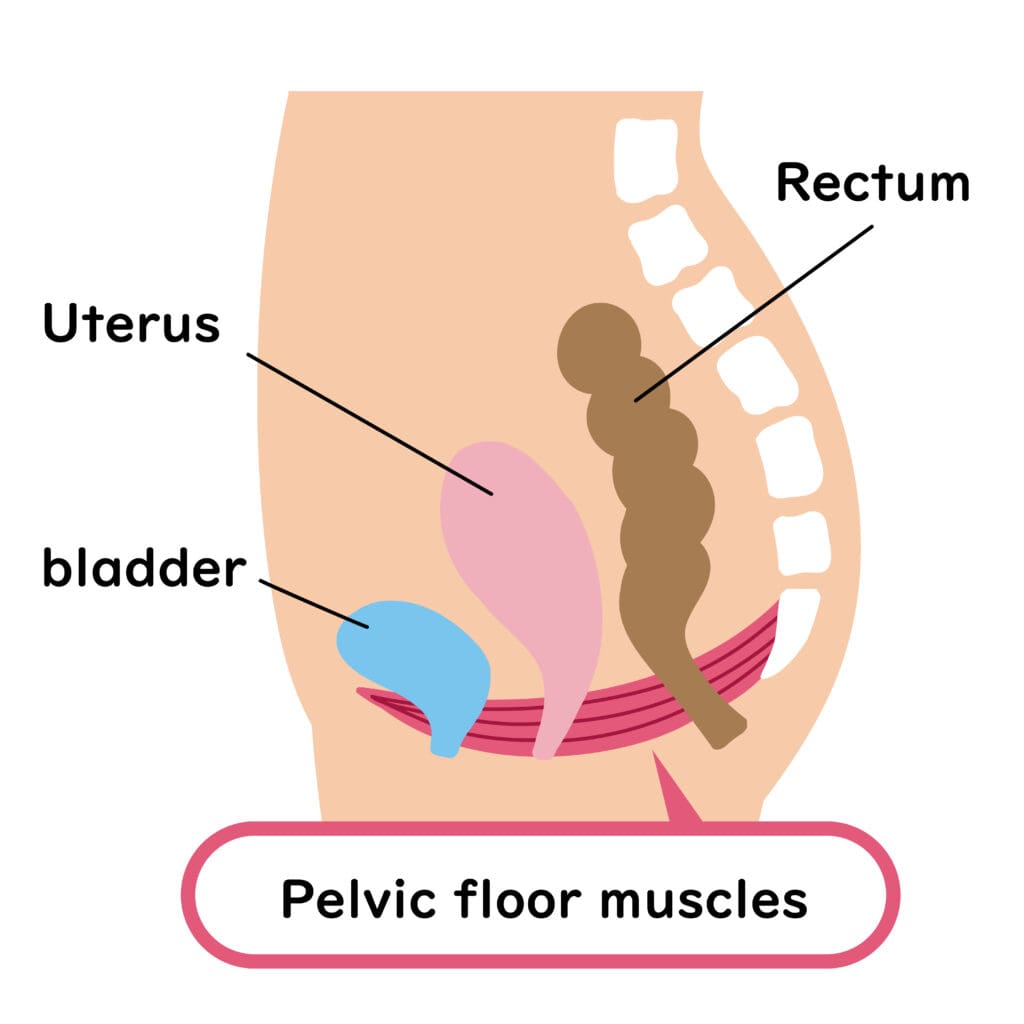Physical Therapy for Women’s Health and Pelvic Floor Dysfunction: How to Solve Incontinence, Pelvic Pain, and Complications from Pregnancy
March is Women’s History Month, so we’re dedicating this blog post to addressing women’s health issues. Do you experience pain during sexual intercourse? Do you experience leakage of urine when jumping or sneezing? Do you have weakness or a separation in your abdominal muscles, known as diastasis recti?
Although these issues are common, they are not normal and can be addressed by a pelvic floor physical therapist!
What is the Pelvic Floor


Picture your pelvic floor muscles as a hammock that stretches from your pubic bone to your tailbone and support your organs and assist in bodily functions including bowel and bladder control and sexual intercourse. The muscles are the bottom part of what’s referred as the “core.” But when people talk about core workouts, they often neglect the pelvic floor muscles.
Pelvic Floor Dysfunction
Pelvic floor dysfunction can occur when the muscles are either too tight or too weak. This can occur due to normal aging, especially during menopause. Pelvic floor dysfunction and also arise due to pregnancy, childbirth, surgery, or trauma.
Common Pelvic Floor Dysfunctions Include:
- Constipation
- Pain During Sex
- Diastasis Recti
- Pelvic Organ Prolapse: due to lack of support from the pelvic floor muscles, pelvic organs can bulge into the vagina
- Anal Incontinence: struggling to control when you pass gas
- Fecal Incontinence: struggling to control bowel movements
- Urinary Incontinence
- Stress Incontinence: peeing while laughing, coughing or sneezing.
- Urge Incontinence: feeling the frequent urge to urinate.
How Physical Therapy Can Help


A pelvic floor physical therapist can address these pelvic floor conditions and help to prevent them from happening. The first step is a thorough assessment. The physical therapist will gather information from you including your medical history, your symptoms, and will perform a detailed examination. Based upon the clinical findings, the physical therapist will develop a plan of care to address the source of the symptoms and create a customized plan focused on strengthening weak pelvic floor muscles and decreasing tension in tight muscles.
Common Physical Therapy Treatments for Pelvic Floor
You’ve probably heard of a kegel or a pelvic floor muscle contraction. The kegel can be an appropriate exercise for strengthening the pelvic floor muscles, however it is important to understand that kegels are not always the answer to pelvic floor dysfunction. A pelvic floor physical therapist can help you determine if the pelvic floor muscles are weak and need strengthening, or if they are tight and need to be down-regulated.
When kegel exercises are appropriate, it is important to understand how to perform the kegel correctly and get the most benefit out of it.
A pelvic floor PT may also use biofeedback to help you train or relax the muscles. Biofeedback uses painless sensors on the skin or intravaginally to create a mind-body connection with the exercise. As you perform pelvic floor muscle exercises for strengthening or relaxation, you will be able to see physiological changes in your body displayed on a screen, which your PT will explain to you. They’ll help you make subtle changes to improve how your body is functioning.
Pelvic floor physical therapy can include internal and external treatments, depending on the physical therapist’s education and training as well as the patient’s comfort level.
Physical Therapy for Pre- and Post-Partum Patients


Pregnancy is life changing in many ways, including changes within your body. As your body adjusts to the changes during and after pregnancy, a pelvic health physical therapist can help diagnose and treat a variety of pelvic floor dysfunctions.
Beyond the pelvic floor, pregnancy can cause pain and discomfort throughout the body including the low back, sacroiliac joint, and hips.
Pregnancy can also cause musculoskeletal issues such as nerve compression, carpal tunnel syndrome, tendinitis, pelvic joint pain, and spinal problems. Physical therapy can help ease these discomforts and help you prepare for or recover from childbirth.
Diastasis recti is a common condition that occurs in pregnant women when the rectus abdominis muscles are pulled apart, damaging the connective tissue that holds them together. Signs you might have diastasis recti are persistent core weakness, low back pain, and a “pouch” that just won’t go away with diet and exercise.
Physical therapy can help prevent diastasis recti with therapeutic exercise and by teaching proper core engagement during pregnancy. The good news is that even if you do have diastasis recti, this condition responds well to treatment focused on strengthening the deep core muscles and avoiding exercises that focus on the rectus abdominis.
The Bottom Line…
The ultimate goal of physical therapy is to improve the quality of your life. Pelvic floor therapists understand how frustrating pelvic floor dysfunction can be. A lot of women do not seek treatment due to the assumption that these issues are common and just part of being a woman.
Imagine how it would feel to no longer have pelvic pain or experience incontinence during your daily activities. Physical therapy can help you achieve that. We want to get your muscles performing properly so they can do their job, and you can get back to living your life.
If you’re suffering from any pelvic floor dysfunction or are pre/post-partum, give one of our pelvic floor physical therapists a call. And remember, you can head straight to PT without a referral in most cases.
For more information and a list of clinics that offer pelvic floor physical therapy, click here.
